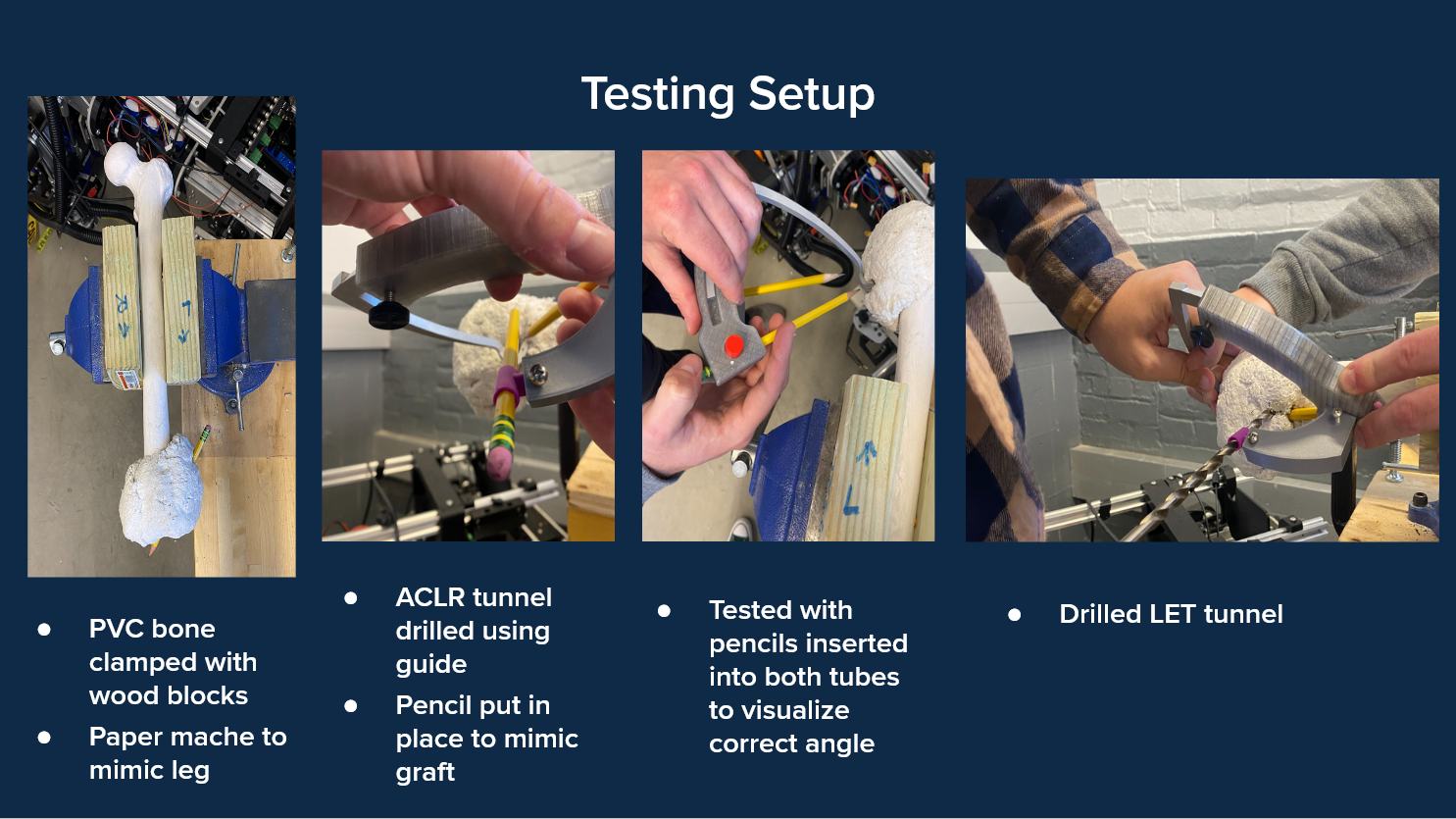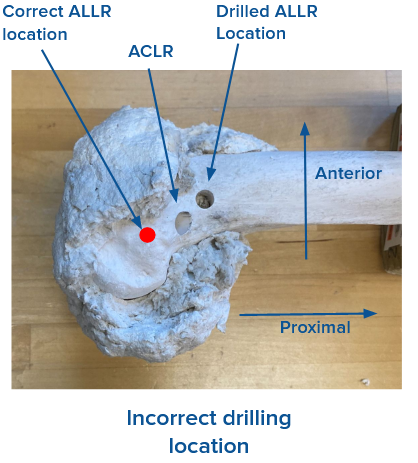Testing Summary:
Tests were conducted on the basis of evaluating drill guide performance and operation when used as a tool to execute an ALLR (Anterior lateral ligament reconstruction) procedure in conjunction with ACLR (ACL reconstruction). Out of all our functional requirements, the testing protocol aimed to assess four important functional requirements: tunnel convergence: drill location, drill angle, and minimizing the number of portals. Tunnel convergence is the main objective of the guide and testing will confirm that the drill guide design can be oriented in such a way that drill an ALLR procedural tunnel while ensuring a conflict with the ACLR tunnel does not occur. Minimizing the number of portals created is also crucial to reducing patient recovery time.
Testing Procedure:
- Drill 2 holes through the center of the bone perpendicular to the bone length
- Drill matching holes through wood blocks
- Insert pencils in holes to connect wood and bone
- Clamp wood blocks surrounding bone to the table for support
- Drill ALCR tunnel using the ACLR drill guide and 8mm drill bit
- Stick in pencil through ACLR tunnel to mimic an ACL graft
- Securely clamp wood blocks surrounding bone to the table for support
- Set up mirage on the bone
- Drill ALLR tunnel with a 7mm drill bit at an angle to avoid conflict using mirage
- Repeat for all 6 leg models

Evaluation Procedure:
Tunnel convergence:
The pencil is used to represent the ACLR graft. If after drilling the ALLR tunnel, the pencil comes out without any marks, that means the two tunnels did not intersect and cause tunnel failure. If the pencil comes out with marks from the drill, that shows that the tunnels did converge and the surgery would have failed.
Number of portals:
The number of portals needed to complete the surgery is important to keep at a minimum. To test the number of portals needed to use mirage in addition to the existing two portals created with the ACLR tunnel, the number of openings on the paper mache will be counted. For tests without paper mache, if the drilled ALLR tunnel location is significantly far away from the ACLR tunnel, a new portal was assumed.
Drill Location and Angle:
The success of drill location and angle is based on anatomical landmarks on the bones, distal and posterior to ACL tunnel, and whether the drill angle was drilled in both anterior and proximal direction.
